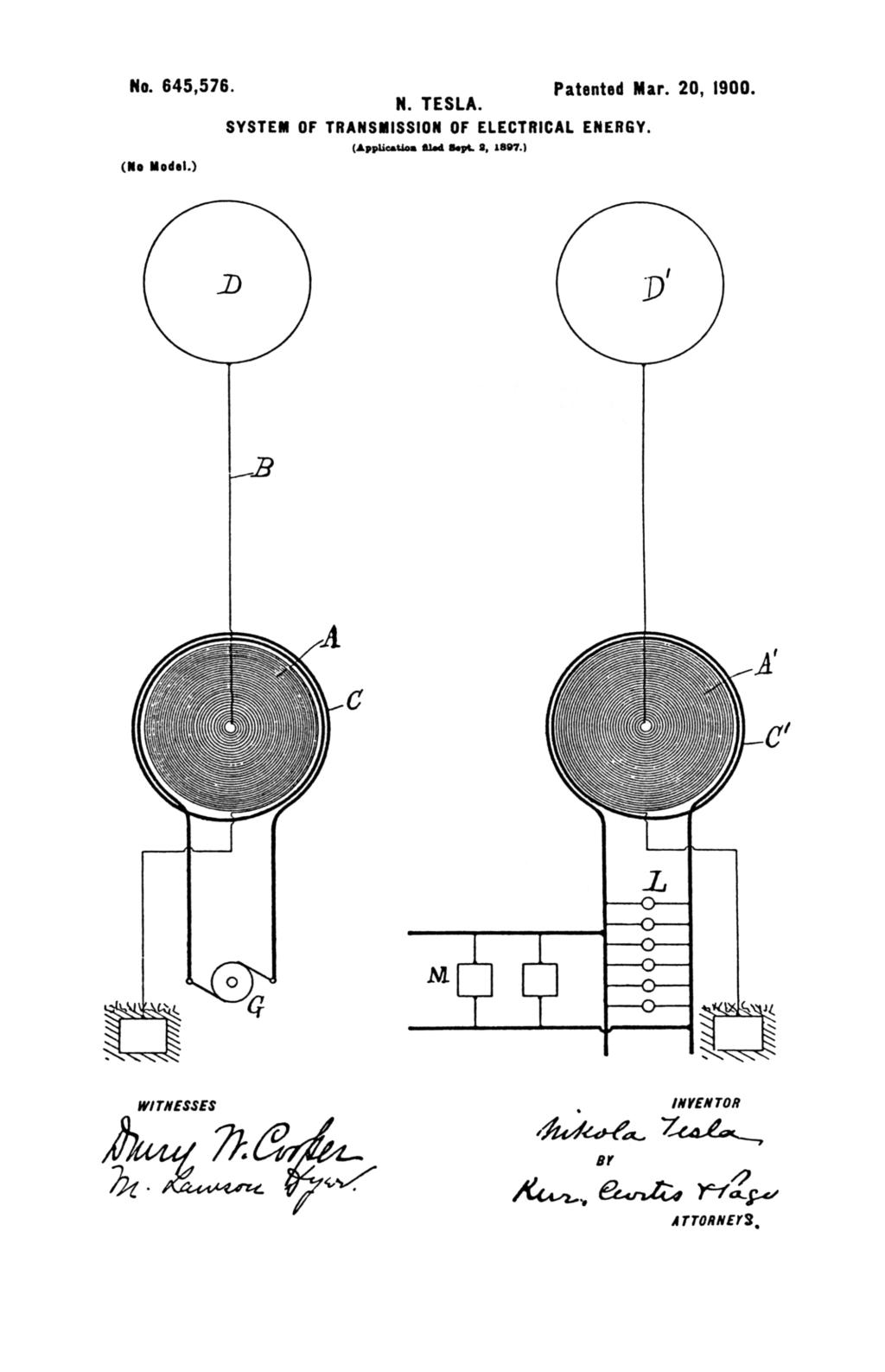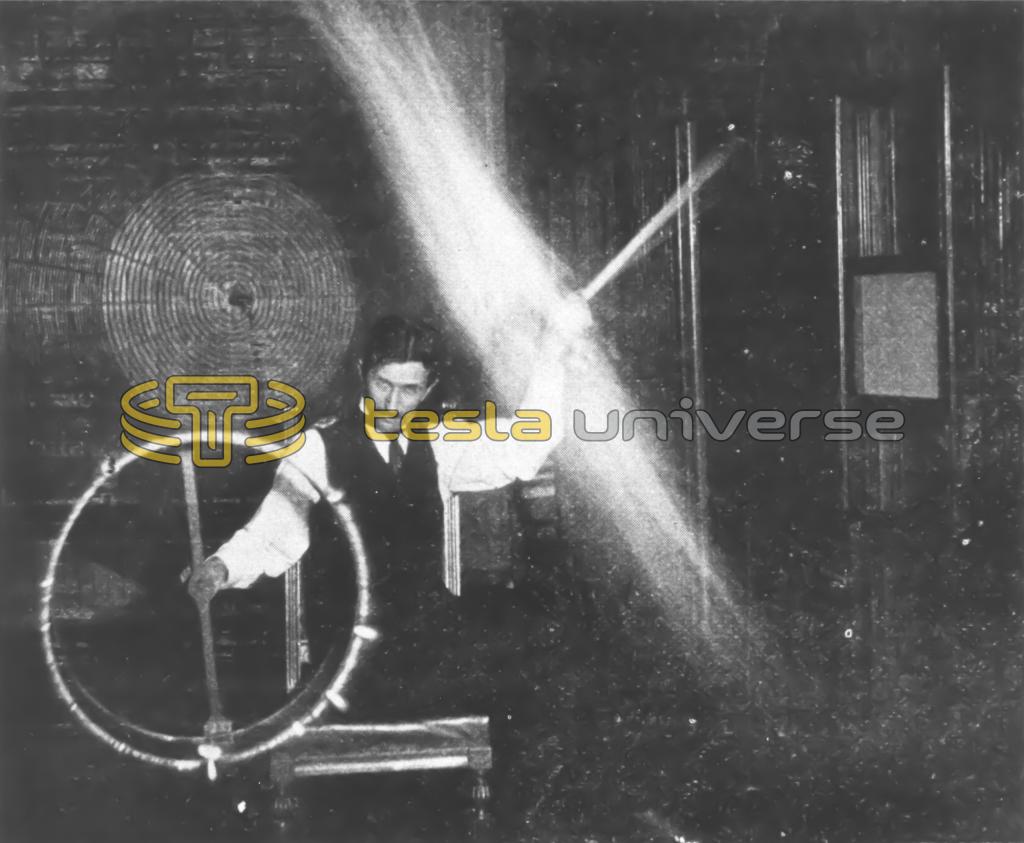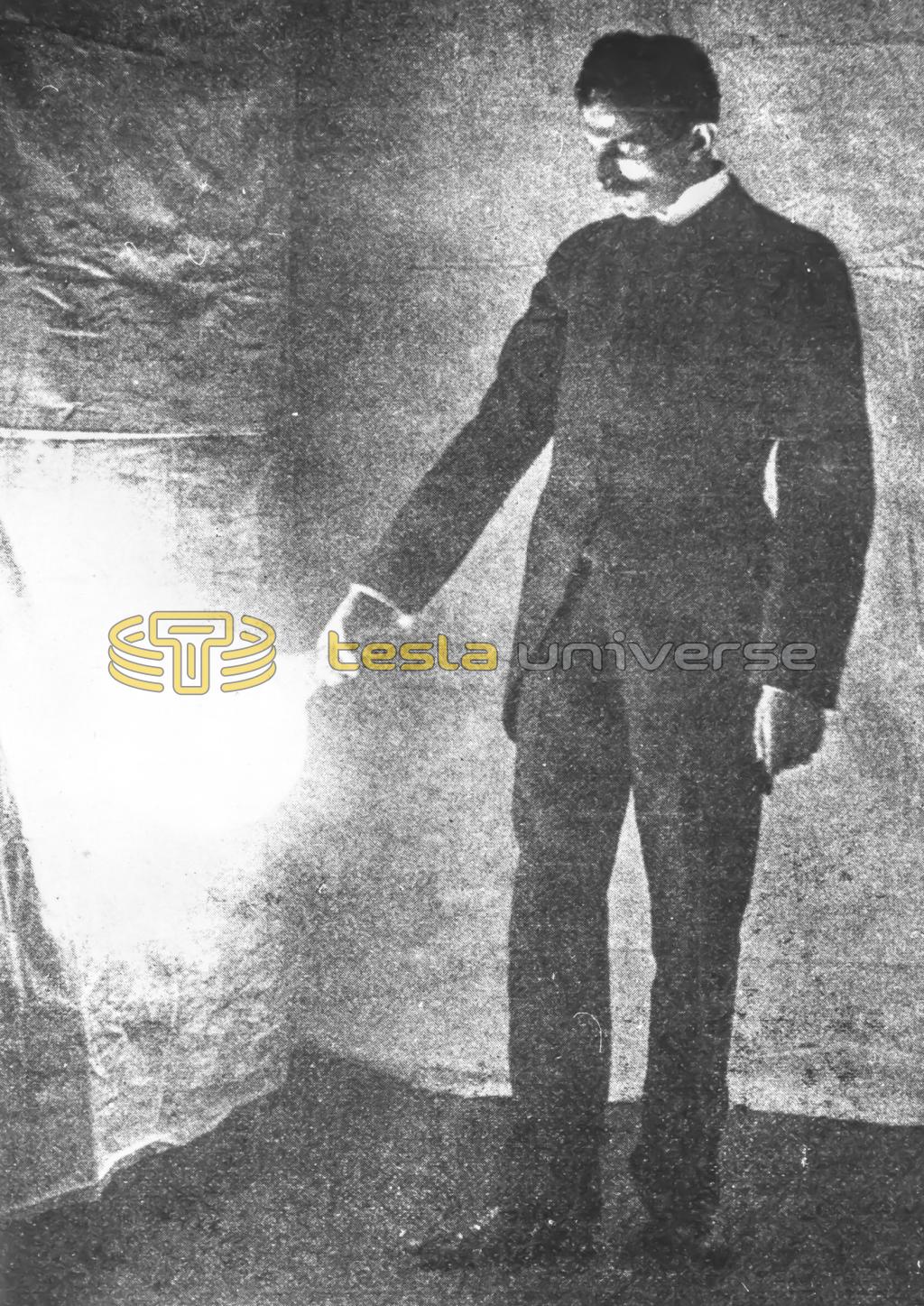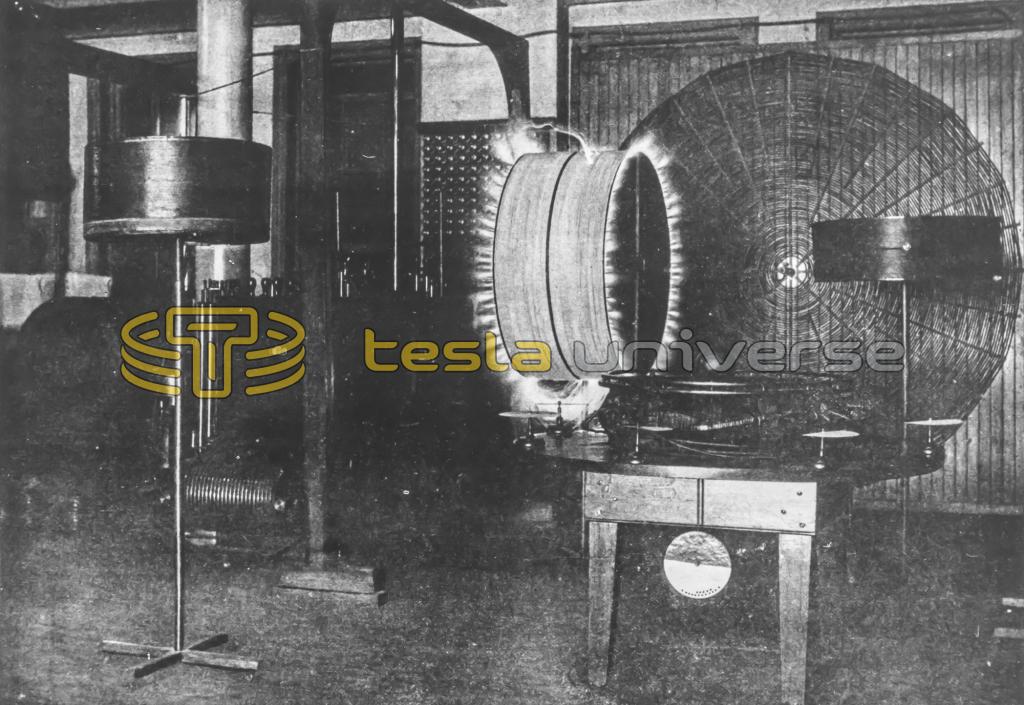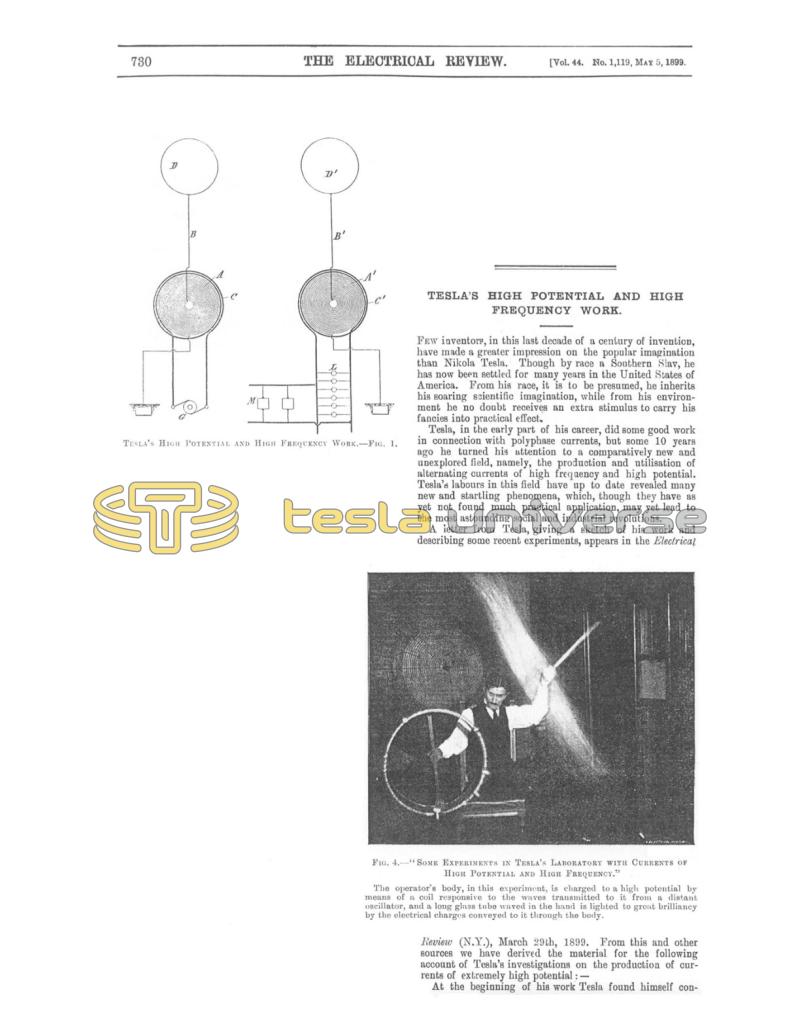
Nikola Tesla Articles
Tesla's High Potential and High Frequency Work
Few inventors, in this last decade of a century of invention, have made a greater impression on the popular imagination than Nikola Tesla. Though by race a Southern Slav, he has now been settled for many years in the United States of America. From his race, it is to be presumed, he inherits his soaring scientific imagination, while from his environment he no doubt receives an extra stimulus to carry his fancies into practical effect.
Tesla, in the early part of his career, did some good work in connection with polyphase currents, but some 10 years ago he turned his attention to a comparatively new and unexplored field, namely, the production and utilization of alternating currents of high frequency and high potential. Tesla’s labors in this field have up to date revealed many new and startling phenomena, which, though they have as yet not found much practical application, may yet lead to the most astounding social and industrial revolutions.
A letter from Tesla, giving a sketch of his work and describing some recent experiments, appears in the Electrical Review (N.Y.), March 29th, 1899. From this and other sources we have derived the material for the following account of Tesla’s investigations on the production of currents of extremely high potential:
At the beginning of his work Tesla found himself confronted by three attractive lines of investigation; “there were the excessive electrical pressures of millions of volts, which opened up wonderful possibilities, if producible, in practical ways; there were the currents of many hundreds of thousands of amperes which appealed to the imagination by their astonishing effects; and, most interesting and inviting of all, there were the powerful electrical vibrations with their mysterious actions at a distance.”
The production of high electrical pressures was finally chosen as, necessarily, the first step in the exploration of the whole field. Some attention was given to static electricity with the experiments of Franklin as a starting point. Various generators of static electricity were tried, and some new ones were designed. Tesla has not as yet published any account of these static generators which he has designed; it is to be hoped he will do so soon. The most valuable outcome of these experiments was the discovery of a method of operating any kind of low tension devices from such high pressure sources with perfect ease and safety.
Tesla, however, soon convinced himself that his object was not to be attained by the use of the steady pressures produced by static machines. “It was exactly,” he says, “as if one attempted to drive piles into the ground by the application of continuous pressure. This would require cumbersome and powerful machinery, and would be very inconvenient. An incomparably better way of developing high pressure is by delivering violent blows as with a hammer.” The kinetic energy of a hammer, when suddenly arrested, develops very high pressures, proportional to the rigidity of the body struck. In the same way, reasoned Tesla, enormously high potentials will be developed in the most convenient way by the electro-magnetic energy of a suddenly arrested current.
This turned Tesla’s attention to the use of transformers and induction coils for obtaining his high pressures. Those already in existence were evidently not adequate for the end in view, so Tesla set about improving them. First he tried the closed core transformer. This type was soon found to have several drawbacks; the insulation could not be made very high, and a very high frequency was impossible. Nevertheless, an arrangement of several of these transformers in series was devised, by which a pressure of 200,000 volts was attained. The secondary coils of several ring transformers were connected in series, while the primaries of all, except the first, were excited by insulated dynamos. This, however, was found to be practically a very inconvenient arrangement.
The straight open core type was then tried; several improvements in the insulation and arrangement of coils were tried, which appear to have been much the same as what has long been known to the makers of induction coils, such as winding in compartments, making the insulation thicker where a greater D.P. existed between adjacent parts of the coil, and so on. The first real advance made by Tesla appears to be his coil with a unipolar secondary. One terminal of the secondary wire is connected to the primary, the free terminal, as far distant as possible from the primary, being used for the discharge. A curious discovery made by Tesla in connection with this type of coil, was that the best results were got when the secondary wire was equal to a quarter of the wave length, as calculated from the frequency and velocity of light. This discovery Tesla has utilized in his most recent induction apparatus, with which he proposes to transmit electric currents through the air. It is difficult to explain this result; it appears as if something of the nature of a stationary wave of potential, with anode at the earthed terminal, was generated in the secondary wire.
During these experiments Tesla discovered that air played an important part in the breaking down of insulation, and by the exclusion of air, and the use of insulating liquids, he was able to increase the potential to 10 times the amount, without breaking down the insulation of the secondary. Tesla complains that the industrial world does not appear to have profited by the recognition of this discovery, since no attempt has been made to utilize it in cables for high potential transmission, to prevent streamers. It is a fact that the liquid insulation is less in favor in practice than when attention was first called to it by Tesla’s experiments. It appears to have many practical inconveniences, and it is doubtful whether it is really superior to the solid insulation except for the high frequencies employed in the Tesla apparatus. An induction coil with viscous insulation was brought out a short time ago by Rochefort and Wydts (Electrical Review, 42, p. 165), and was said to be a great advance in efficiency, but it, like all the rest of each apparatus, has apparently dropped into disuse.
The final result of Tesla experiments with high tension generators was the coil or transformer illustrated in adjacent figure. In this coil the secondary coil is wound in a spiral lying practically in one plane perpendicular to its axis; its external terminal is earthed, and its length is made equal to a quarter wave length. The primary consists of a few turns of thick wire wound outside the secondary, lying thus adjacent to the part of the secondary whose potential is zero. It is with this apparatus that Tesla has made his experiments in the transmission of power through the atmosphere. The figure shows two transformers, a transmitter, and a receiver. The central terminals are connected to elevated plates, D, D’, which require to be supported at a considerable height on a kite or a balloon. Tesla thinks a height of four miles will be sufficient. The air at such a height is supposed to break down under the enormous potentials developed, and become dissociated into a good conductor. This system of Tesla’s has yet only appeared on paper, or, at least, no experiments on a large scale have been carried out in public. The criticisms with which this scheme was received when announced last November were by no means favorable. But Tesla is a pioneer in this field, and probably knows more about it than his critics. It is to be hoped that we shall soon see such a practical trial of his system as will finally determine its true value.
Tesla hints at a fearful catastrophe which might result from the introduction of his system of wireless transmission of power. The discharges of his coil when of an electromotive force of a few million volts, excite powerful affinities in the atmospheric nitrogen, causing it to combine readily with the oxygen and other elements, particularly in the presence of aqueous vapor. So energetic are these actions, and so strangely do such powerful discharges behave, that, says Tesla, “I have often experienced a fear that the atmosphere might be ignited.” Can Tesla seriously believe in the possibility of such a calamity and yet go on with his experiments? Evidently the Tesla transformer is what Sir William Crookes wants to increase our supply of nitrates, and keep the wheat crop up to the demands of the world’s increasing population; it is to be hoped Tesla’s experiments will not solve the food problem in another way by reducing the population to zero.
The large size illustrations we publish show some remarkable results obtained in Tesla’s laboratory by this coil. Fig. 2 shows a vacuum tube giving 1,500 C.P. illuminated by electric waves from a Tesla oscillator. Fig. 3 is a photograph showing a part of the laboratory with a disconnected resonating coil supported on an insulating stand, and illuminated by the streamers produced, other coils remaining unaffected. The pressure developed in the resonating coil is over half a million volts. In a similar experiment Tesla grasped, without danger, a nodal point in a coil developing half a million volts. Fig. 4 shows a receiving coil illuminating a vacuum tube through the human body.
Very few details of the construction and operation of these latest fruits of Tesla’s inventive genius have yet been published. For instance, we are left in the dark as to whether Tesla excites his high tension transformer by an alternating dynamo, or by a continuous current and a contact breaker. It is evident that lately he has been giving considerable attention to the latter device, in connection with an induction coil which has been exhibited in this country, and is generally known as Tesla’s oscillator.
In 1891 Tesla patented a method of producing high frequency and high potential currents, in which an alternating generator sends currents through a primary, the secondary of which is in circuit with a condenser. This condenser lies also in a shunt circuit containing the primary of a second coil and a spark gap. The discharge of the condenser across this spark gap produces high frequency oscillations in the shunt circuit, and these oscillations are raised to an exceedingly high potential in a secondary coil wound round the second primary. It was with an arrangement such as this that Tesla obtained the marvelous results which he showed before the Institution of Electrical Engineers at the Royal Institution in 1892. The discharge from his apparatus appear to penetrate with ease the best insulators; electrodeless vacuum tubes were illuminated at a distance of several yards from the poles of his coil; unipolar lamps gave out a light of dazzling whiteness, but unfortunately of very small candle-power. It appears to be one of these unipolar lamps that is held in Tesla’s hand in Fig. 2. If so, very considerable progress has been made since the Royal Institution lecture in 1892.
It is a coil of the above type that is generally used for producing Tesla currents for electro-medical purposes. Their use for certain purposes in electro-therapeutics is said to have been highly successful. It is a curious fact that such discharges of a potential of tens of thousands of volts can be passed through the body without any injury. A satisfactory explanation of this strange phenomenon has not yet been given; it has been suggested that it is because these rapidly varying currents must be purely superficial; it may, perhaps, be due to the fact that such currents are almost completely wattless, owing to the displacement of phase between the current and the electromotive force being almost a maximum.
In 1896 Tesla patented an improved generator of high frequency currents, which is known in this country, at least, as Tesla’s oscillator. The spark gap in his first type of generator was replaced by a mechanical contact breaker, and the arrangement of the circuits was somewhat different. A condenser is connected in shunt in a circuit containing a continuous current generator, choking coils, the primary of the coil, and a contact breaker. When the circuit is closed by the contact breaker a direct current flows through the circuit. The circuit is then suddenly broken, and the condenser is charged to a very high potential by the self-induction of the choking coils. The contact breaker again closes the circuit, and the condenser discharges through the primary, which, being of few turns, has a comparatively small self-induction. The result is, that the frequency is considerably higher than in the ordinary induction coil where the choking coils would form part of the primary coil. This oscillator has been shown more than once in this country; it can be worked from lighting mains, and its working appears to be highly satisfactory.
It is apparently in connection with this oscillator that Tesla has devoted himself to the improvement of the mechanical contact breaker. In his original patent for the oscillator (No. 20,981, A.D. 1896) he describes a rotary contact breaker, which creates by its motion a current of air about the contact points, with the view apparently of removing the dissociated air, and improving the insulation of the spark gap. It is in a more recent patent (No. 12,866, A.D. 1898) on electric circuit controllers that we find embodied Tesla’s latest discoveries in this field. The contact breakers there described are mechanical, of a very elaborate construction; too elaborate, we should think, for general use with induction coils, unless their superiority to the present simpler forms is very great. Two new ideas appear to be embodied in these interrupters; first, the break takes place in compressed air or other suitable gas, and second, a jet of mercury discharged against a metal plate, or another jet of mercury is used to complete the circuit. The metal plate is rotated by an electro-motor, and is notched on the periphery where the jet of mercury impinges, so that contact is broken when the jet passes through one of the notches between the teeth. Tesla has expressed a somewhat ungenerous contempt for the Wehnelt break, which has recently given such remarkable results in the hands of experimenters here and abroad. Its inferiority to Tesla’s break appears to be known as yet only to Tesla; in simplicity, at least, it is certainly superior.
We, however, wish Tesla success in the working out of his grandly conceived, and if realized in practice, undoubtedly epoch-making ideas.
